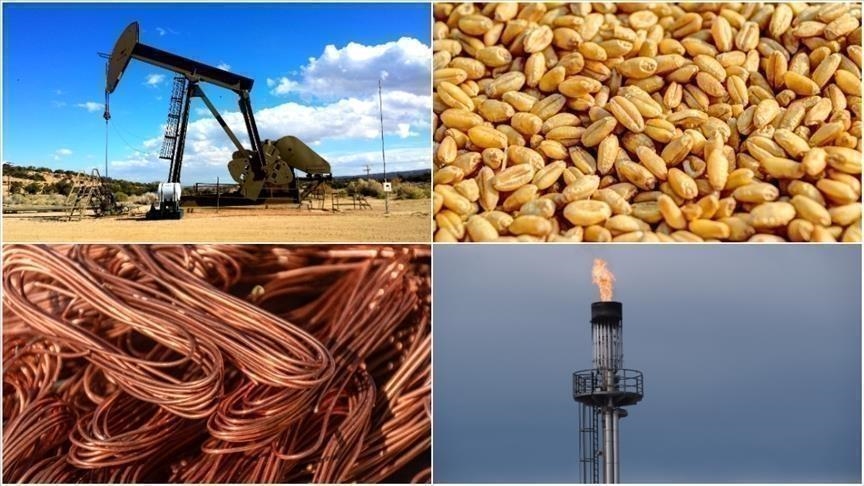

By Anadolu Agency
ISTANBUL
The pressure in the commodity market increased last week, as uncertainties in the monetary policies were the main factor causing the pressure.
With the rise in the uncertainties regarding the future monetary policy of the US Federal Reserve, a downward trend prevailed in the commodity market last week, while sharp movements with volatility came to the fore.
Both macroeconomic data and the Fed officials’ guidance caused difficulties in commodity prices.
In its “Beige Book” report, the Fed said general economic activity has changed “very little” in recent weeks, while growth expectations have remained largely unchanged.
Consumer prices increased due to higher inventory and labor costs as well as still high demand in general, according to the report.
New York Fed President John Williams said inflation continues to slow down but is still at a very high level.
Richmond Fed President Thomas Barkin said he would like to see more evidence of inflation in the US returning to the Fed’s 2% target, adding that the American economy is functioning well at the current level of interest rates.
While a 25-basis-point Fed increase in interest rates next month is considered certain by the money markets, the uncertainties regarding the July meeting have also strengthened.
The volatility in commodity prices increased as the Bank of Japan started to make adjustments to the yield curve at this month’s meeting and the Bank of England will increase interest rates by three times until the end of the year.
Analysts said that uncertainties regarding monetary policies increased the pressure on the commodity market.
Among precious metals, gold and silver fell 1.1% each, while palladium and platinum rose sharply, 6.1% and 7.6%, respectively.
The macroeconomic data announced in the US posted mixed signals regarding the economic activity, and hawkish comments of the Fed officials made the expectations about the monetary policy in the next period uncertain, according to analysts, who also argued that this situation suppressed the price of gold.
Despite the downward trend in gold and silver, the ongoing recession concerns increased the demand for palladium and platinum.
There was also a bearish trend in base metals last week; copper decreased 2.8%, nickel fell 0.6% and zinc dropped 5.2%, while aluminum increased 0.9%, and a flat course was observed in lead.
Sharp fluctuations came to the fore in energy commodities; Brent oil fell 5.3% last week, while natural gas trading on the New York Mercantile Exchange rose 5%.
The decline in Brent oil prices was driven by recession concerns for the US economy and oil demand.
Natural gas prices increased with the prediction that the temperatures will decrease again, which will raise the demand for heaters.
The increase in electricity production in the US was also one of the factors that increased natural gas prices.
A downward trend dominated the agriculture market.
Wheat trading on the Chicago Mercantile Exchange last week lost 2.8%, corn fell 3.2%, soybeans dropped 1.2%, and rice slipped 2.7%.
On the Intercontinental Exchange, cotton fell 3.4%, while cocoa rose 3%, and a flat course was observed in coffee.
Sugar, which saw its highest level since March 2012 with $0.2509, ended the week with a 5.5% surge.
Rice prices fell as production estimates increased.
An estimated decline in sugar production in France and India caused an increase in prices.
Analysts predicted that the El Nino weather events may also hit sugar production.
We use cookies on our website to give you a better experience, improve performance, and for analytics. For more information, please see our Cookie Policy By clicking “Accept” you agree to our use of cookies.
Read More